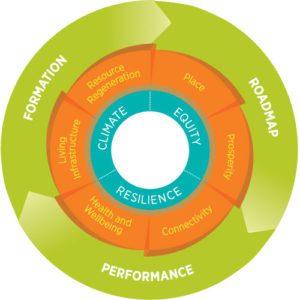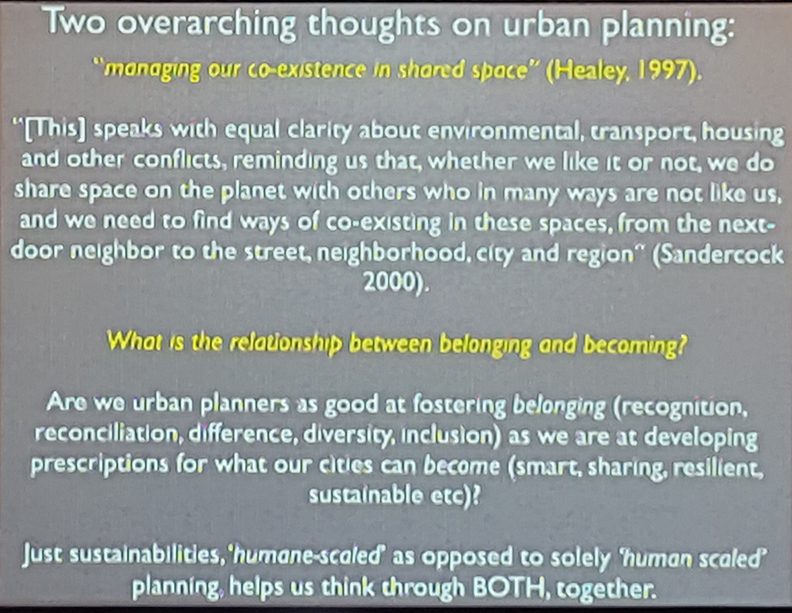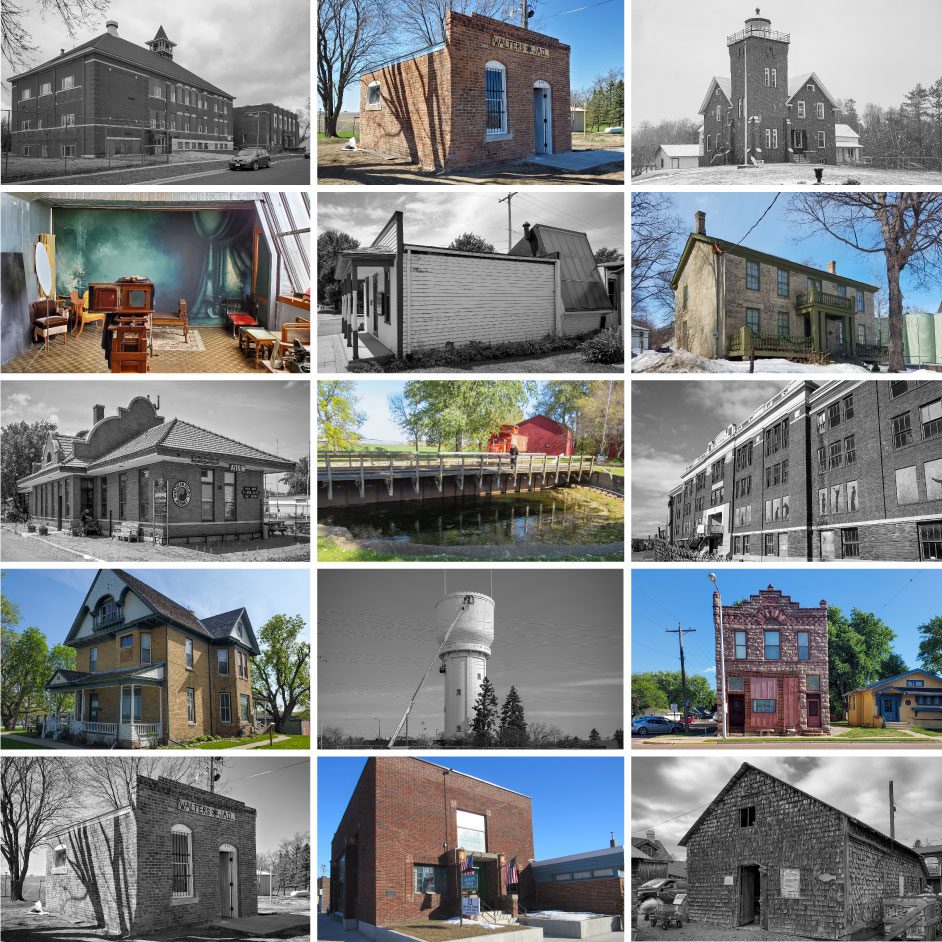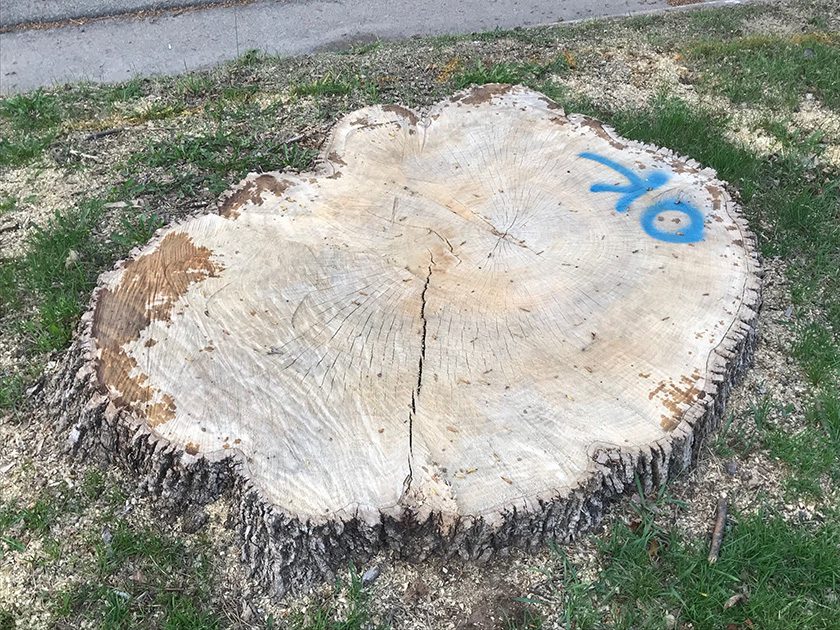
In October, Bailey Hanson and I had the opportunity to attend the EcoDistricts Summit which was held in Minneapolis this year. As both an organization and a process to help cities and communities holistically shape the growth of their neighborhoods, EcoDistricts gathered a diverse array of professionals from not only the design, development, and construction fields, but also a broad cross-section of planners, policy-makers, educators, scientists, and highly-engaged members of the community. The topics presented at the summit were broad but organized in specific interest areas focused on creative placemaking, district energy & water, equitable development, health & wellness, and resilience. Having had time to reflect, I’ll elaborate a little on the EcoDistricts protocol and some of my take-aways from this year’s summit.
What is EcoDistricts?
EcoDistricts is a nonprofit organization operating primarily in North America committed to supporting and advancing emergent models of urban regeneration and community development. EcoDistricts helps guide development by engaging local experts and community stakeholders through a framework that targets equity, resilience, and climate impacts. Because of its emphasis on involving local residents, the projects currently certified are strong examples of place-based design. To complement the local expertise, EcoDistricts provides projects with an international network of development and design professionals that guides projects to successful completion while ensuring that innovative ideas are expanded upon wherever stakeholders wish to engage in the process. This process promoted by EcoDistricts guides communities through three phases of implementation with clear goals relating to specific community-development priorities.

By focusing on place, prosperity, connectivity, health and well-being, living infrastructure, and resource regeneration, stakeholders engaged in EcoDistricts’ process will hopefully put their neighborhoods on a path that is more sustainable, inclusive, and economically vital. The process supported by EcoDistricts strongly values neighborhoods as the building blocks of sustainable and equitable cities. The summit showcased this value by highlighting six neighborhoods and projects in Minneapolis and Saint Paul that are engaging in similar processes: the former Ford Site (LHB is currently engaged to produce development design standards), District Energy in Saint Paul (whose office in the Jemne Building was remodeled by LHB’s Commercial Studio) , the Rondo Land Bridge, Upper Harbor Terminal, Glenwood/Plymouth Corridor (with which LHB’s Housing Studio has had significant involvement), and Towerside Innovation District (registered with EcoDistricts and in which LHB’s Landscape & Planning Studio also played a role).

Take-Aways:
The summit offered several sessions and various formats for delivering the content, and I encourage further exploration of the topics on their 2018 program site. In addition to the expert panels on Equity and Affordable Housing, I attended sessions relating to revitalizing industrial landscapes and structures, scaling area master plans to realistic metrics of sustainability & regenerative resource production, and several quick TED Talks-style presentations on strategies of resilient neighborhoods. After two days of seminars, workshops, tours, and networking I came away with several big ideas, but here are three that I think are worth revisiting:
1. Regenerative Urbanism requires a built environment that is a platform for a sustainable economy.
Any community, whether it be a dense urban environment or a rural downtown, benefits from the efficiency of having complementary resources close at hand. District systems like the steam- and solar-generated power provided by Ever-Green Energy in Saint Paul or the rainwater collection and treatment system at the Minneapolis Convention Center provide great examples of how design can make the most of the built environment by intelligently planning for the gathering, distribution, and reuse of the resources we use every day. Both examples use systems that were put in place over time as advantages in proximity or volume were realized. Hassalo on 8th in Portland’s Lloyd EcoDistrict embraced the idea of a district system from the onset of site planning, striving to divert 100% of the development’s future wastewater from the municipal sewer. The project achieved this goal by dedicating a portion of the site to “stack” the demands of the wastewater treatment system with typical open space amenities.

This project benefited from several other unseen adjacency worth mentioning: a well-informed and progressive project owner who controlled all land needed for development, a supportive regulatory environment, municipal services willing to participate in innovative district practices, and a highly collaborative design team of architects, engineers, and landscape architects. Not every project comes to the table with these advantages, but that doesn’t preclude the possibility of a district system ever existing. Intelligently designed high-performing buildings should anticipate and be ready to participate in a district system at some scale. Buildings should be made plug-in ready if we expect to see the regenerative cities of the future. When city planners can count on buildings to partake in a district system, then those planners will begin to initiate redevelopment projects with the appropriate regenerative infrastructure – much as rapid transit is leading the way for a large part of the redevelopment of urban cores.
2. “Placemaking” can make thriving communities, but design that participates in empowering makes those communities a renewable resource.
I think my colleagues would agree that design should be driven towards doing what’s best for the community it serves. Being a participant in the creation of those places and spaces is what I love most about being an architect and designer, and several sessions at the summit reiterated to me the positive ways in which community spaces that respond well to their users can channel that energy to increasingly productive ends. The power of design to multiply outcomes is an idea that resonates with many of us. Still, the summit challenged me to consider: How do those spaces work against us in times of emergency or turmoil? How do public spaces present themselves to newly-arrived communities – do they encourage participation or throw up barriers? Do some spaces so successfully serve a community that they make a community unwilling to grow?
An anecdote provided by Julian Agyeman, the keynote speaker, offered a lens with which to view these challenging issues. In a study on the use of a park, a family was asked why they always frequented the same part of the park. Their answer was simply that the trees in that area reminded them of home, so spending time there allowed them to participate in their new community in a familiar setting. Incidentally, this park was slated for redesign and the survey was conducted to provide the hired designers with data on utilization and programming. The comforting trees had been slated for removal because they were considered invasive.

Aside from wondering how the designer’s decisions on the future of the park would have differed in the absence of the family because the park hadn’t felt welcoming to them, this story speaks to the changing nature of our communities and the challenging task of designing to shape spaces that can grow with them.
3. Diversity & Interdisciplinarity for the win!
The broad range of professions and the diversity of people present at the summit was one of its most refreshing offerings. Typically, this sort of conference tends to gather experts on a subject into one area for a short and intense period of information sharing. While this knowledge-sharing is critical, one tends to encounter similar people and similar ideas from place to place. EcoDistricts’ distinguishing value of embracing and including all players in the built environment game meant many people were having engaged conversations with experts well outside the typical circles of their expertise. This sort of diversity of backgrounds leads to collaborations that are not only strengthened by the broadening expertise of those involved but also in outcomes that are more relevant for the people using them.
More on EcoDistricts: https://ecodistricts.org/about/

